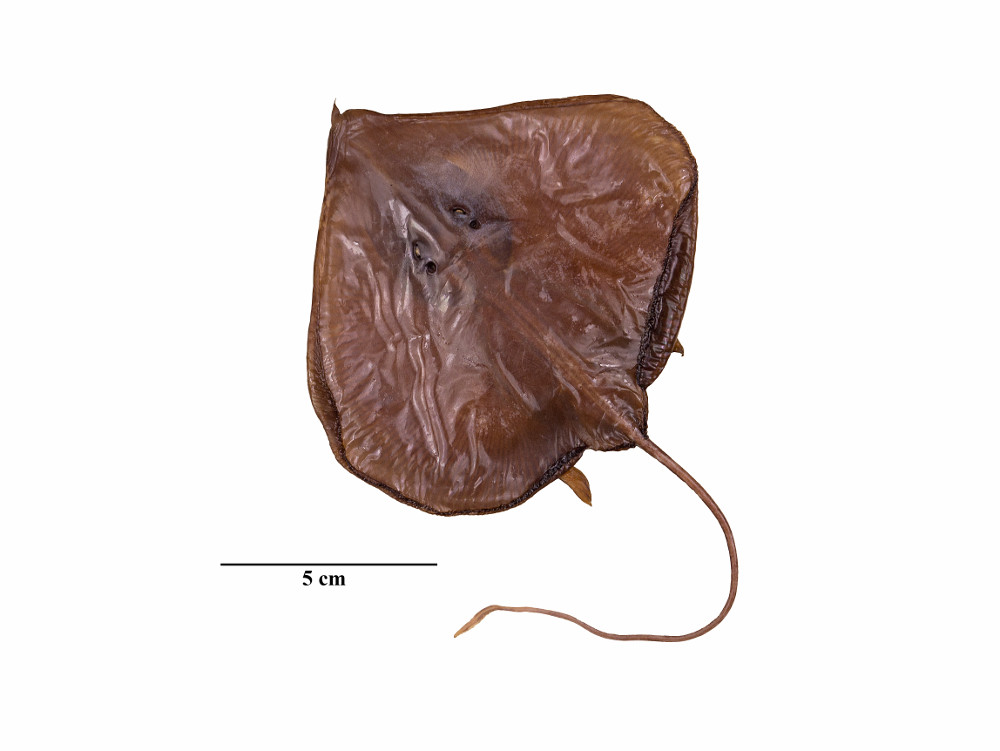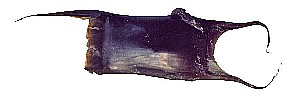Indobatis ori
(Wallace, 1967)
Black legskate
Classification: Elasmobranchii Rajiformes Anacanthobatidae
Reference of the original description
The batoid fishes of the east coast of Southern Africa. Part III: Skates and Electric Rays. Investigational Report Oceanographic Research Institute, 17, 1–62
The batoid fishes of the east coast of Southern Africa. Part III: Skates and Electric Rays. Investigational Report Oceanographic Research Institute, 17, 1–62
Image of the original description
Image in copyright.
Image in copyright.
Synonyms / new combinations and misspellings
Anacanthobatis ori, Springeria ori
Anacanthobatis ori, Springeria ori
Description :
Citation: Indobatis ori (Wallace, 1967): In: Database of modern sharks, rays and chimaeras, www.shark-references.com, World Wide Web electronic publication, Version 12/2025
Please send your images of "Indobatis ori" to info@shark-references.com

Indobatis ori (Wallace, 1967); ZMH 25930; juvenile male; 222 mm TL; © Dr. Simon Weigmann, Elasmobranch Research Laboratory, Hamburg, Germany

Indobatis ori (Wallace, 1967); ZMH 25930; juvenile male; 222 mm TL; © Dr. Simon Weigmann, Elasmobranch Research Laboratory, Hamburg, Germany
Common names
 Black leg skate,
Black leg skate,  Black legskate,
Black legskate,  Raia preta
Raia preta
 Black leg skate,
Black leg skate,  Black legskate,
Black legskate,  Raia preta
Raia preta
Short Description
A dark smooth-skinned legskate with a long, slender tail greater than body length; snout angular with broad-based filament; pectoral disc with rounded corners and no large thorns or denticles except for alar spines on adult males [536]. Legskates have pelvic fins separated into a mobile leg-like front lobe, and a rear lobe that may be fused to the tail base [536]. Uniformly grey-black or brownish above, lighter below [536].
A dark smooth-skinned legskate with a long, slender tail greater than body length; snout angular with broad-based filament; pectoral disc with rounded corners and no large thorns or denticles except for alar spines on adult males [536]. Legskates have pelvic fins separated into a mobile leg-like front lobe, and a rear lobe that may be fused to the tail base [536]. Uniformly grey-black or brownish above, lighter below [536].
Human uses
fisheries: of no interest
fisheries: of no interest
Biology
Oviparous. Distinct pairing with embrace. Young may tend to follow large objects, such as their mother [17086].
Oviparous. Distinct pairing with embrace. Young may tend to follow large objects, such as their mother [17086].
Remarks
shark-references Species-ID=13977;
shark-references Species-ID=13977;

















